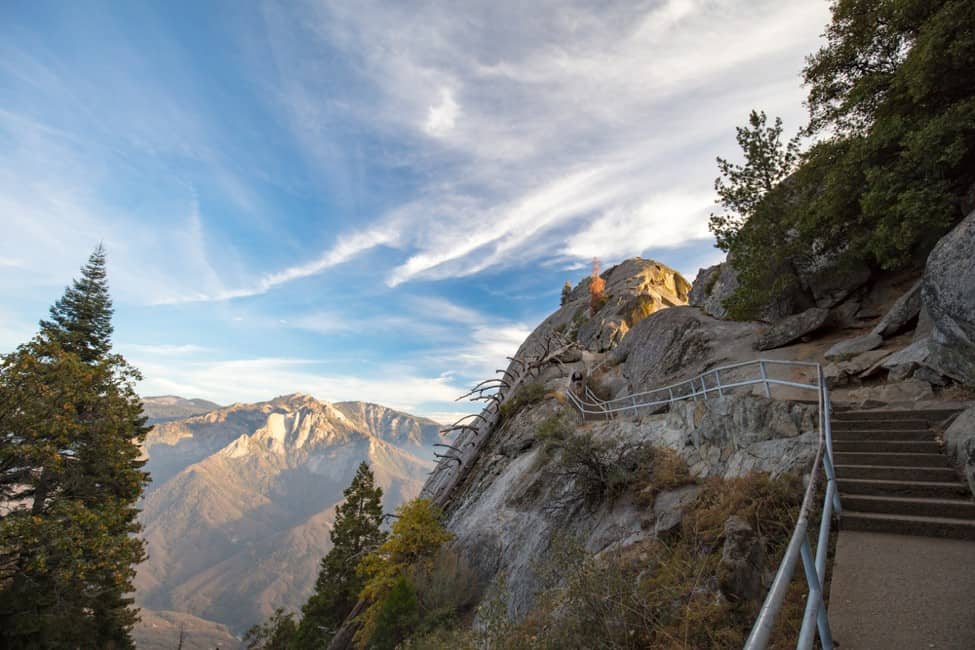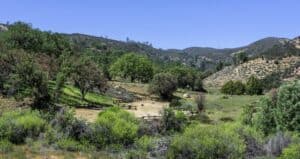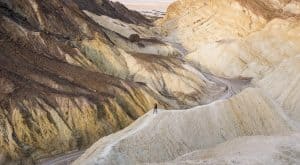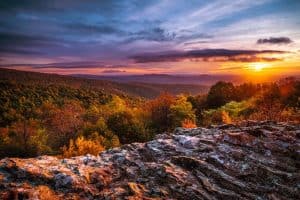Last Updated on March 9, 2023 by Alice Benny
Best Hikes In Sequoia National Park – Alpine lakes, quiet sequoia groves, and breathtaking sunset views are just the tip of the iceberg of the spectacular sites found in Sequoia National Park. Hiking is one of the best ways to explore this beautiful landscape up close for an exhilarating outdoor experience.
A walk down the trails in Sequoia National Park puts you in the vicinity of the world’s biggest trees while getting away from bustling crowds. There are several miles of trails in Sequoia, but how do you know which is the best hike in the park?
This article digs into the nitty-gritty about hiking in Sequoia National Park, giving you insights about where to stay, how to access the park, and guidelines for the best hikes amidst the sequoias.
Best Hikes In Sequoia National Park
1. General Sherman Tree
The General Sherman Tree (named after William Tecumseh Sherman, an American Civil War General) is a must-see when visiting Sequoia National Park. It’s the biggest tree by volume in the world, though not the widest or the tallest. This tree’s trunk has more wood than any other tree worldwide. It’s 2,200 years of age and 275 feet tall.
The General Sherman Tree Trail is only 1.5 miles, an easy and relatively short hike that includes up close and personal views of this exalted giant. For a longer hike, consider the Congress Trail, which is about 3 miles. The trail is spectacular during the winter but fun throughout the year.
Along the way, you’ll see The House, The Senate, and other famed Sequoia trees. Keep an eye on the Room Tree towards the trail’s end. A large part of the Room Tree trunk is hollow due to destruction from a forest fire.

2. The Big Trees Trail
After the General Sherman Tree, the second most well-known trail in the park is the Big Trees Trail, which leads through one of the biggest sequoia groves in the world, the Giant Forest.
The trail winds through the Round Meadow, bordered with old sequoias. You’ll also come across several displays and detailed markers on your way to teach you about the sequoias.
This hike starts at the Giant Forest Museum. Get there early to secure a parking spot, aiming for before 9 AM during the summer. You can also use the shuttles during the day to visit other regions in the park, so you don’t have to worry about finding another parking spot.
The Big Trees Trail is a boardwalk track that’s handicapped-accessible. You can park at the trailhead with a handicapped parking permit to save you from parking further away at the Giant Forest Museum parking lot.
Don’t forget to stop at the Giant Forest Museum after the hike to learn more about these majestic sequoias and the surrounding habitat.
3. The Crescent Meadow
The Crescent Meadow Trail meanders through a bright green vegetation setting, a stark contrast to the giant sequoias’ red bark. Many artists have drawn inspiration from this spot over the years, with the wildflowers adding more color to the beautiful scenery during spring.
This two-mile trail is family-friendly, even for those with restricted mobility and young kids. Along the way, you’ll come across Tharp’s Log, a sequoia log cabin put up in 1861 by Hale Tharp, a miner. Stay alert for coyotes, black bears, bobcats, and deer as you walk along the trail.
Crescent Meadows Trail also has the famed Tunnel Log that emerged after an unspecified sequoia dropped over Crescent Meadow Road in 1937. Park officials cut a tunnel across the log during the following summer.
If you want to keep going, you can choose from one of the many trails that stretches from Crescent Meadows.
4. The Congress Trail
If you want to see other Sequoias and get away from the crowds at the General Sherman Tree, consider the Congress Trail. This hike shares a trailhead with the General Sherman trail that passes the giant tree and loops out to the other two sequoia groves.
The largest sequoias and groves in this park region get their name from the former presidents of the U.S with Congressional houses as from the trails’ names. Visit The Senate and The House to get spectacular views of tightly clustered sequoias. Don’t forget to look out for the McKinley Tree and the President Tree.
The Congress trail offers an escape from the crowds at the General Sherman Tree and leads to equally amazing scenic views. You’ll get plenty of room to relax and enjoy your experience only a few steps onto the trail past the crowds around the German Sherman.
The trail has moderate gain in elevation in some sections, but it’s generally easy. Remember that this park region is situated at a high elevation, so stay hydrated and take breaks as needed.
The starting point of the trailhead is at the parking lot off Wolverton Road. You can begin from the General Sherman Tree lot instead when you’re coming from the Giant Forest Museum using the park shuttle.
5. The Moro Rock
One of the most well-known destinations to watch the sunset in Sequoia National Park is Moro Rock. The adjacent mountains and valleys turn bright shades of orange, purple, and pink.
The distinctive rock formation is a vast block of natural granite. There’s a stairway carved into the rock that climbs hundreds of feet to the summit. It’s a hell of a hike to the peak of Moro Rock, ascending almost forty flights of stairs. Although the distance is short, the elevation gain is so steep that it’s considered a strenuous hike.
At the top, you’re rewarded with views of the Great Western Divide towards the north and west of the park and the outlying Sierras on the east side.
You can drive up to the trailhead at Moro Rock via the popular Tunnel Log when the sun sets. The road heading to Moro Rock closes during the day to vehicle traffic so only park shuttles can access this route during this time. If you aren’t up for the hike, consider taking a shuttle from the Giant Forest Museum rather than using your own vehicle to get to Moro Rock before sunset.
There are guard trails at Moro Rock’s summit, but those who are afraid of heights shouldn’t spend much time there. Don’t worry, there are other epic viewpoints on the trail with less extreme drop-offs just before the summit.

6. Tokopah Falls Trail
Tokopah Falls is among the few waterfall treks in the park, and the trail begins from Lodgepole campsite, making it an ideal hike if you are taking the park transport. It is among the most popular hiking tracks in the park because of its low altitude and beautiful topography.
The path goes past the Kaweah River to the vast granite rocks and captivating Tokopah waterfalls. Due to snowmelt, the waterfall typically gushes in full force during late spring to early summer, slowing down tremendously by late summer.
Overall, the track is fundamentally flat with a striking landscape out to the 1,200-foot falls. Don’t forget to keep your eye out for wild animals along the path.

7. Marble Falls Trail
If you want a more challenging and less crowded waterfall hike, Marble Falls is the best alternative, starting at Potwisha Campsite in the foothills area of the park. This trail is an excellent option if you’re camping in this area.
The Marble Falls are not as stunning as the Tokopah Falls, but there are different views of the falls as they gush down. The trail takes you through extensive canyons and up an altitude of 1,500 feet or more to access the falls, making it the perfect place for a picnic after a challenging hike.
During the summer, the foothills region can be scorching. Therefore, this hike is recommended during the off-season or very early in the morning to steer clear of the heat.
8. Big Baldy Ridge Trail
This hiking trail is very popular for those making a trip from the park to Kings Canyon National Park. The Big Baldy Ridge track is halfway between Grant Grove and Giant Forest, a great midpoint trek.
The path to the peak of Big Baldy gives you a 360-degree view from where you can see Sequoia National Park to the south, and Kings Canyon National Park to the north. You’ll also get striking views of the Great Western Divide, Castle Peak, Sawtooth Peak, and Alta Peak.
The hike can be a bit difficult as it is elevated, but it is not too strenuous for average hikers, and you can spot some wildflowers along the way early in the summer if you are lucky.
9. Trail of the Sequoias
It might seem like there are unlimited trails to traverse the sequoias in the Giant Forest. If you don’t like crowds, avoid the Congress and General Sherman tracks and take this add-on track along the sequoias path.
This trail begins and ends at the beginning of the General Sherman Tree. The path leads you beyond this marvel and many more massive sequoias on the curve to Crescent Meadow. You will also encounter Tharp Log, Chimney Tree, and Congress Group along the route.
Just like the Giant Forest curve, this trail’s biggest obstacles are extra elevation and distance. You’ll find some privacy in the middle of the redwoods as you get away from the crowds.
10. Lakes Loop to Heather Lake
This is one of the most sought-after backcountry trails in the park. It begins from the overflow parking place off Wolverton Road (also frequently used to get to the General Sherman Tree).
The track is out-and-back, although it is usually referred to as a loop. The track begins in a forested region while steadily ascending to Pear Lake, Emerald Lake, and Heather Lake. You’ll trek past three striking alpine lakes before returning to the beginning of the trail.
Approximately four miles from where the trail begins and many elevations later, you’ll reach Heather Lake. After hiking for another mile, you’ll be rewarded with a beautiful sight of Emerald Lake.
Many backpackers like pitching their tents at this spot, but there are campsites available at Pear and Emerald Lakes. To get to the last and biggest lake on the track, you will have to go another 1.5 miles.
You can opt to go as far as Heather Lake and return if you want a shorter hike.
What to Carry During Your Visit
- A hiking overnight bag and the ten necessities: It’s important to bring along safety equipment every time you go for a hike, and bring along an overnight bag with sufficient room for extra gear and water.
- Hiking Poles: These poles give you an excellent way of minimizing impact if you are on a high-altitude hike. The rods are fitted with carbon fiber poles, making them lightweight and easy to take along on any sort of hike.
- Trekking Boots: Any successful hiking trip requires sturdy, comfy hiking shoes with firm traction. Remember to break in your shoes before your hiking trip.
- Merino Wool Socks: These socks are the best when you go hiking. They are a bit pricey, but they will protect your feet from blisters, keep them dry, and last a long time.
- Headlamp: A headlamp is a must-have if you plan on hiking at sunset or sunrise.
- Layers: To be comfortable the whole day, carry warm fleece layers and moisture-absorbing shirts.
- Sunscreen and sun hat: Many tracks don’t have shade; therefore, shielding yourself from the sun is something to consider. Sunscreen is essential, but a sun hat will do a great deal in protecting you from sunburn.

Tips for Sequoia Best Hiking
Be sure to plan your trip for the best time to visit Sequoia National Park.
- You will be charged an entry fee to access Sequoia National Park. You can utilize the yearly National Park Pass to save time when accessing the park. The pass also gives you access to Sequoia National Park and Kings Canyon and an additional 400 other parks.
- There is limited cell service in most areas of the park. Download your accommodation information or take a screenshot before reaching the park. If you are hiking, ensure that you download your route details so you can find your way without relying on your phone’s service.
- The park is located in bear country. If you encounter wildlife, protect them by giving them ample space. In addition, ensure that you make some noise when you are in less packed trails to let the animals know you are there.
Sequoia National Park Hiking
With its gigantic trees and steep canyons, it’s a no-brainer why the hiking trails in Sequoia are popular among many visitors. We hope this article has helped you decide which trails in the park are best for you. There’s something for everyone in this park, no matter how experienced or adventurous a hiker you are.
Glacier National Park Camping
Best Time to Visit Glacier National Park
Best Time to Visit the Grand Canyon National Park
Things to Do in Rocky Mountain National Park
Yellowstone Hiking Trails
Best Time to Visit Yellowstone
Yosemite Hiking Trails
Best Time to Visit Yosemite
Best Time to Visit Grand Teton National Park
Grand Teton Hikes
Best Death Valley Hikes and Tips for Hiking Death Valley
Best Hikes in Bryce Canyon
Best Time to Visit Death Valley
Best Time to Visit Acadia National Park
Things To Do In Kings Canyon National Park
Best Time to Visit Crater Lake
Crater Lake Camping
The Best Crater Lake Hikes
Best Time to Visit Lake Tahoe
Lassen Volcanic National Park Camping
Lassen Volcanic National Park Things To Do
Redwood National Park Camping
Redwood National Park Things To Do




